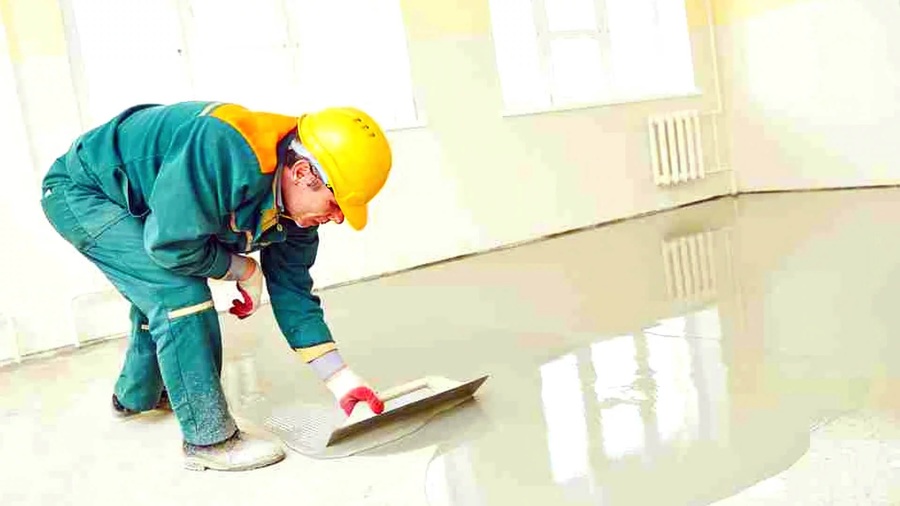to Avoid When Applying Epoxy Coatings
Table of Contents

Epoxy coatings are a popular choice for various flooring applications, from residential garages to industrial warehouses. They provide a durable, seamless surface that is easy to clean and maintain. However, applying epoxy coatings requires careful preparation and attention to detail to ensure a successful installation. This article will discuss the top mistakes to avoid when applying epoxy coatings.
Failing to Prepare the Surface Properly
One of the most common mistakes when applying epoxy coatings is not adequately preparing the surface. Removing all dirt, debris, and contaminants from the surface is essential to ensure proper adhesion. This can be achieved through mechanical methods such as grinding, shot blasting, sanding, and chemical methods such as acid etching or a degreaser. Following the manufacturer’s recommendations for surface preparation is essential to ensure the best results.
Inadequate Mixing
Epoxy coatings consist of two parts: resin and hardener. Inadequate mixing of these two components can result in uneven curing, leading to a weak and brittle coating. To avoid this mistake, following the manufacturer’s instructions for mixing the components is crucial. It is recommended to mix the components thoroughly for at least two to three minutes using a mechanical mixer. It is also essential to mix only the amount of material needed for the application to avoid wasting the product.
Applying Too Thin or Thick Coating
The thickness of the epoxy coating plays a crucial role in its durability and performance. Applying a coating that is too thin can result in a weak and brittle coating that is susceptible to cracking and chipping. On the other hand, using a layer that is too thick can result in improper curing and a soft, sticky surface. It is essential to follow the manufacturer’s recommendations for the thickness of the coating to ensure optimal performance. Typically, a 10 to 12 mils thickness is recommended for a single coat.
Insufficient Drying Time
Epoxy coatings require adequate drying time to cure properly. Rushing the drying process can result in a tacky or soft surface prone to damage. It is crucial to follow the manufacturer’s instructions for drying time and avoid applying a second coat before the first coat is fully cured. This can lead to improper curing and poor adhesion between the layers. Typically, epoxy coatings require at least 24 hours to cure before foot traffic and 72 hours before heavy use.
Applying in Unsuitable Conditions
The environment in which the epoxy coating is applied plays a crucial role in its performance. Applying the coating in unsuitable conditions, such as high humidity or extreme temperatures, can result in improper curing and poor adhesion. It is vital to follow the manufacturer’s recommendations for the ideal temperature and humidity range for the application. Typically, a temperature range of 60°F to 85°F and a humidity range of 40% to 60% is recommended.
Failing to Address Moisture Issues
Moisture can have a significant impact on the performance of epoxy coatings. Applying epoxy coatings to a damp or moist surface can result in poor adhesion and costly mistakes. Testing the surface for moisture using a moisture meter and addressing any moisture issues before applying the coating is crucial. This can be achieved through the use of a moisture barrier or a waterproofing system.
Improper Ventilation
Epoxy coatings emit volatile organic compounds (VOCs) during application and drying. Inadequate ventilation can result in the accumulation of these VOCs, leading to health hazards and poor air quality. It is essential to ensure adequate ventilation during the application and drying process. This can be achieved through the use of ventilation systems or opening windows.
Ignoring Safety Precautions
Epoxy coatings contain chemicals that can be harmful if not handled properly. Ignoring safety precautions during the application process can lead to health hazards and accidents. It is crucial to follow the manufacturer’s recommendations for safety, including wearing protective clothing, gloves, and eyewear. Working in a well-ventilated area and avoiding smoking or eating during the application process is also important.
Applying Over Existing Coatings
Applying epoxy coatings over existing coatings can lead to poor adhesion and failed installation. It is essential to remove any existing coatings or finishes from the surface before applying the epoxy coating. This can be achieved through mechanical methods such as grinding or sanding or chemical methods such as using a stripper. It is crucial to ensure the surface is completely free of existing coatings or finishes before applying the epoxy coating.
Skipping the Primer Coat
A primer coat is essential for ensuring proper adhesion between the surface and the epoxy coating. Skipping the primer coat can result in poor adhesion and, ultimately, a failed installation. It is crucial to follow the manufacturer’s recommendations for the type of primer to use and apply it according to the instructions. This will ensure optimal performance and longevity of the epoxy coating.
In conclusion, applying epoxy coatings requires careful preparation and attention to detail to ensure a successful installation. By avoiding the top mistakes mentioned above, you can ensure that your epoxy coating will perform at its best and provide a durable and seamless surface for years. It is essential to follow the manufacturer’s recommendations and instructions for surface preparation, mixing, application, and safety to achieve optimal results. Remember to take your time, be thorough, and follow best practices to ensure a successful installation.
Key Takeaways
- Proper surface preparation is crucial for successful epoxy coating application.
- Adequate mixing, application thickness, and drying time are key factors to ensure a durable and long-lasting coating.
- Apply epoxy coatings in suitable environmental conditions and address any moisture issues beforehand.
- Follow safety precautions to avoid health hazards and accidents.
- Remove any existing coatings and apply a primer coat for optimal adhesion.
